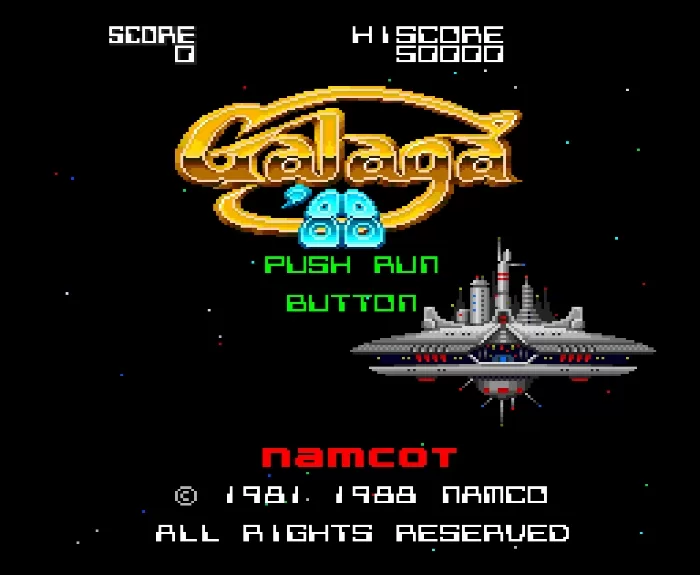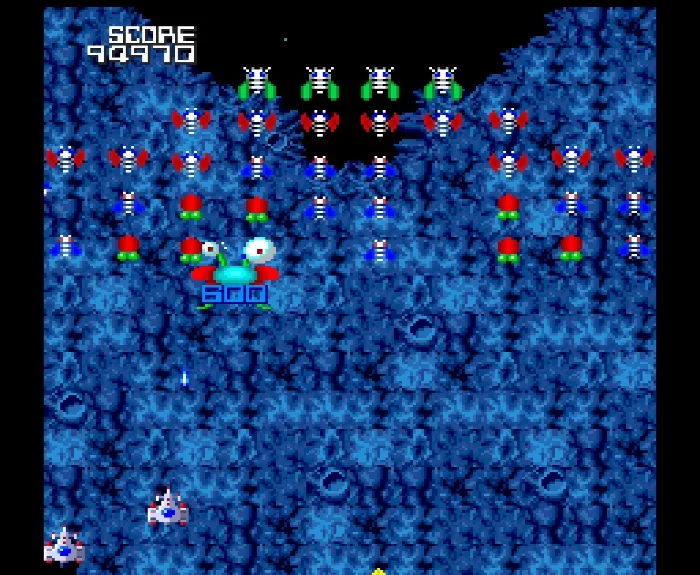
Galaga is an undeniable classic, but what about its sequel, Galaga ’88?
In Retro Game Of The Week I pull a game from my collection and write about why it’s important or interesting. Or in some cases, badly dated and rubbish.
Way back in the day, I threw more than a few 20c pieces — yes, youngsters, at one time 20c was all you needed for a credit in Australian arcades — into Namco’s classic Galaga.
These days, I own Galaga across a few different compilations, because if there’s one thing that Namco likes doing with its classic game IP, it’s re-releasing it for every single console generation that it can.
I think the earliest Galaga copy I’ve got is for the NES, and the newest for the Nintendo Switch. It’s a well regarded classic… look, I may as well save time and embed the clip now, right?
I suspect Namco’s share price went up when this film came out. Just a hunch.
What about Galaga ’88? Maybe you’ve never heard of Galaga ’88, and you’re wondering whether you need to have played Galagas 2 through 87 before even approaching it.
Worry not; in this case the ’88 in Galaga ’88 relates to its year of release — more or less, it actually came to Japanese arcades in December of 1987 — rather than any particular numerical sequel series.
Galaga ’88 doesn’t massively mess with what people remember and love about Galaga. You’re still a lone ship, fighting off wave after wave of enemies that fly down the screen at you.

War is hell. Surprisingly sparkly shiny hell, but hell nonetheless.
You still can have twin ships if you’re willing to sacrifice a life, although notably for the PC Engine version I have, you can pick that as a starting configuration if you wish; I don’t know if the arcade version offered similar.
You can even let a double ship get captured and, if you don’t accidentally shoot it down, you’ll get a triple ship. That’s a very wide body configuration though not as wide as it could be. Somewhere out there, there’s probably a Galaga hack that lets you just stack ships until you can no longer move left or right, for sure. But this is not that game.

The triple ship is clearly Sir Mix-A-Lot’s favourite.
Galaga ’88 stands out from its sequel in a couple of interesting ways. There’s a branching path structure that lets you warp to different areas, a lot more background detail and a considerably higher level of animation, with enemies that bulge eyes when shot, foes that combine to make bigger threats and destructible background elements as well.

The alien seems outraged that I’ve shot it.
Then again, I DID just shoot it, so maybe it has a point.
It’s a more complex affair in that sense, but rarely one that’s particularly overwhelming if you’ve already got a little Galaga muscle memory to speak of.
It also rather highlights the differences we used to endure in release schedules back in the day. I have a Japanese copy, so it’s Galaga ’88, but by the time the PC Engine had come to the US — as the Turbo Grafx 16 — it was Galaga ’90. We never got either machine here in Australia, but had it made its way here, I’m willing to bet the PAL variation would have been Galaga ’92 or maybe even Galaga ’93.
For my purposes, it absolutely is one of my go-to games for a quick blast of play. Ideal if you’re time-poor but want to play something; I can’t pretend to be massively good at it, but that doesn’t always matter if all I want is a five minute diversion, really.
How to play Galaga ’88 now

I can’t really call my copy “mint condition”.
More like “Looks like it was run over by the truck exiting the mint”.
Still works, though.
So, pricing out my cart only copy is tricky, because I bought it as part of a job lot with a bunch of other loose PC Engine cards for (if memory serves) about 2,000 Yen all up. A decent deal at the time, it equated to about 100 yen per game. Can’t argue with games for a buck, and while some of them aren’t as good as Galaga ’88, the value was still there.
While classic Galaga is across a bunch of compilations, Namco’s been a tad more fussy about where Galaga ’88 appears, and currently the Switch version in Namco Museum’s your easiest go-to, or maybe the PC Engine Mini if you wanted one of those.
If you wanted the actual PC Engine version like what I’ve got, that’ll run you around $20 for a loose card version, more for boxed. I haven’t spotted any slabbed copies for whatever reason — I’m perfectly happy with that.
